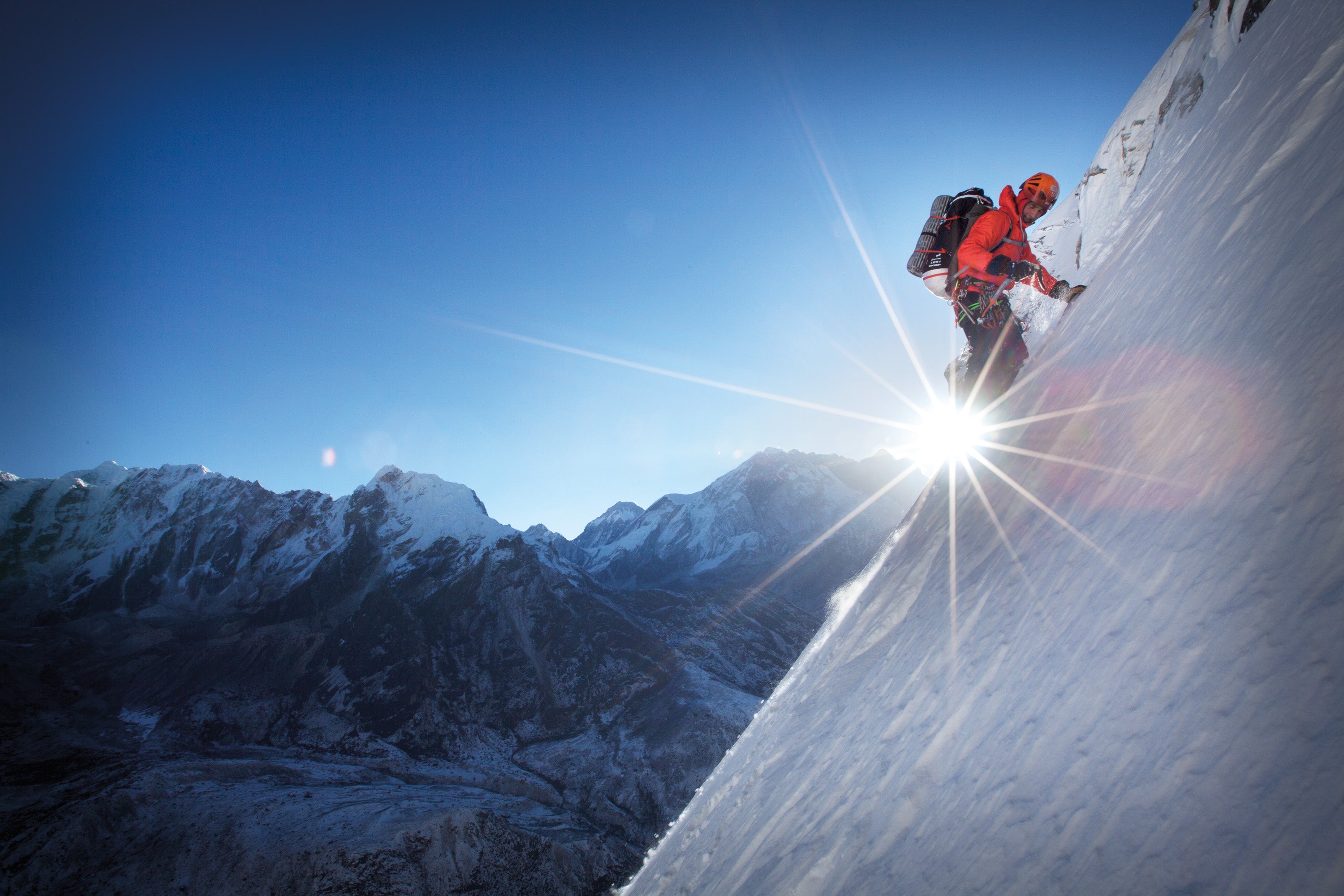5 Questions For: Ueli Steck

'Ueli Steck climbing the north face of Cholatse in Nepal in April 2012. [photo: Freddie Wilkinson]'
Ueli Steck, known to many as the “Swiss Machine,” has climbed some of the world’s highest peaks and smashed speed ascent records from the Alps to the Himalayas. BACKPACKER caught up with him in advance of his nationwide speaking tour to discuss the risks of climbing and the allure of the mountains.
BACKPACKER: A little over a year ago, you completed a solo climb of Annapurna via the notoriously difficult south face without any supplemental oxygen. Do you anticipate doing more big climbs in that style, or perhaps returning to speed ascents?
UELI STECK: Let’s see. For me, ascents like Annapurna—this is the chance of your lifetime to climb something like this. You have to accept it. It’s a big risk combined with a lot of effort. It’s playing a game with high risk. For me, I have to be careful I like this game. But I have to be honest, you don’t survive this kind of climbing on long-term.
Speed ascent? Why not? I like to be fast. So maybe new projects will be more based on my endurance skills without very technical climbing. I have different ideas. But I’m also looking forward to climbing some hard routes with a partner.
BP: Describe the training that goes into the ascent of a 8,000-meter peak. How do you build strength and, especially, improve lung capacity?
US: This is a lot of work. It’s basically a normal scheduled training. Usually first I do 8-10 weeks muscle training to build the strength. After baseline training, another 8-10 weeks and after all its a lot of interval high intensity trainings. Pretty basic. We adapted, of course, to different projects. For Annapurna, I was also working a lot on my technical skills. Specifically down climbing was a big issue for me. I think this is very important and this is definitely me strength to be able to have the technical background.
BP: You’ve survived avalanches, rock fall, and extreme oxygen deprivation. What scares you the most on the mountain these days?
US: I get more scared in daily life at home than in the mountains. I like to be up there and I also accept the risk in the mountains. I don’t like avalanches at all. This is a part which is really hard to handle. You cannot measure it…I don’t like that.
BP: It’s been a difficult year in the Himalaya, with the Everest avalanche in April and the Annapurna circuit blizzard in October. Do you expect these events to have widespread effects on climbing in the region?
US: Everest is a story itself. It’s not my business there and it’s better like that. I don’t get why people make such a big deal out of this. When you go to the mountains you accept the risk. If you walk through the Khumbu icefall, you accept it. No matter if you are doing it for money to work or just for yourself. This is just a simple fact. Everybody can make their own decision.
On Annapurna, I guess there was a big storm. This can happen. But also here, we have the possibility to get a really good weather forecast these days. If you check the weather forecast, you can see a storm like that and you can make your decisions. But don’t misunderstand me, it’s always a tragedy when people die. I always feel very sad about accidents like that.
BP: What’s up next for you in 2015?
US: I don’t like to talk too much about projects. I’d rather climb it and then talk about. First, I wanted to go back to Everest, but I won’t go. There is too much going on which I don’t like. I have a really cool project in the Alps which will take a lot of time and training. After, in the fall, I will return to the Himalaya. I cannot stay away from the thin air…
Ueli Steck will begin a nationwide speaking tour on December 5, with proceeds to benefit the American Alpine Club. For cities and dates, click here.